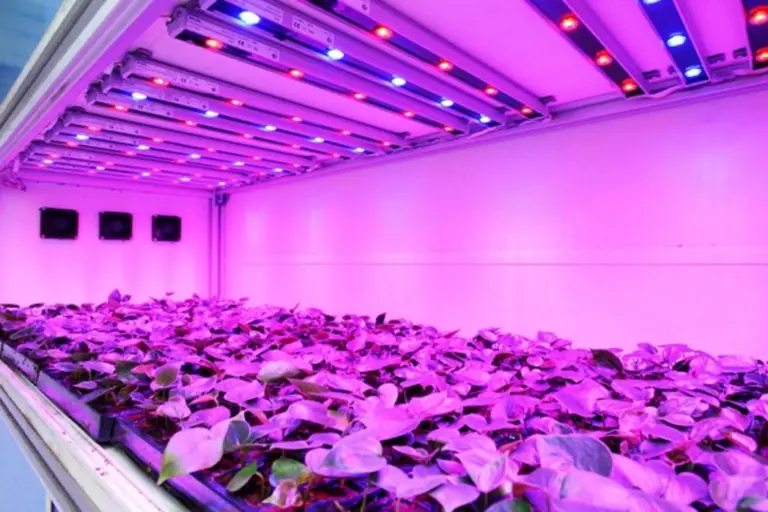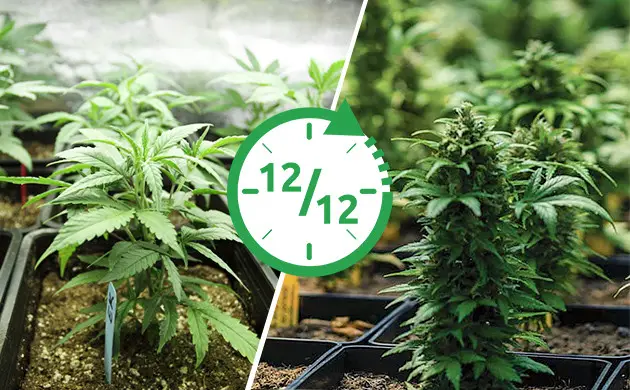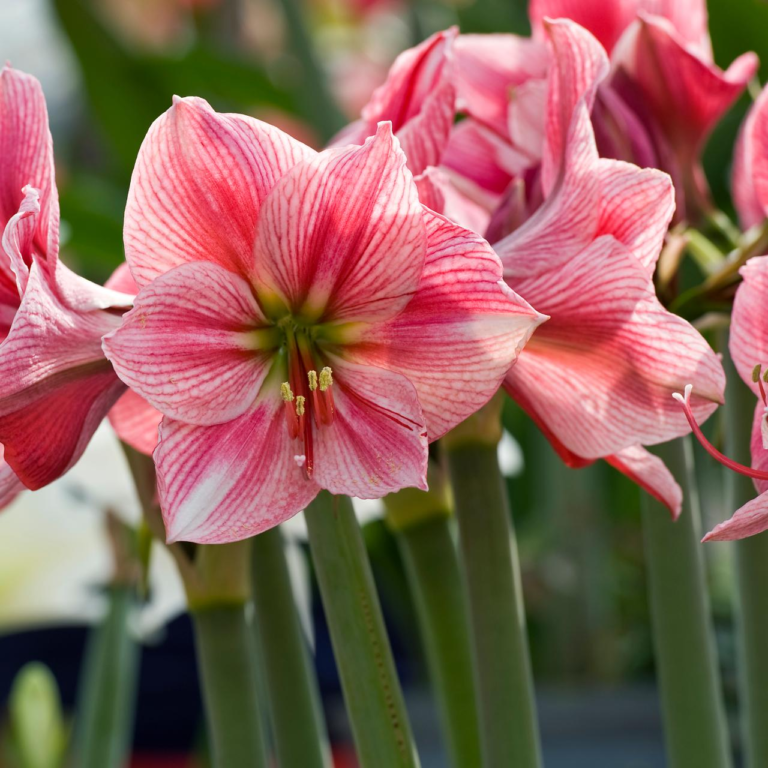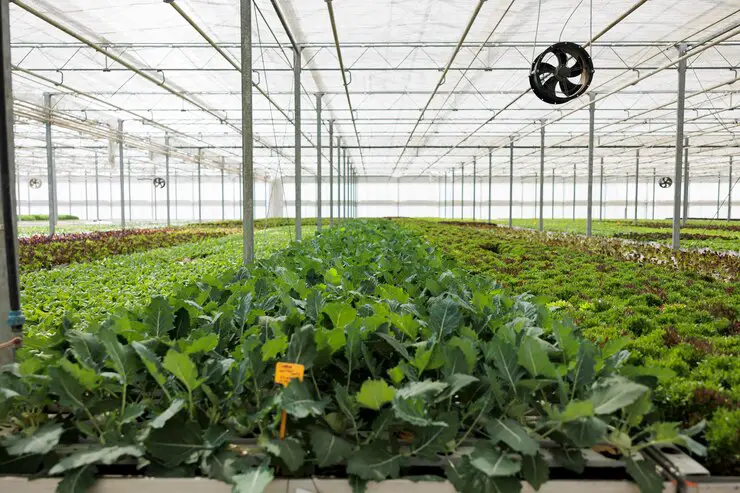Luffa: The Best Versatile Multipurpose Plant
Table of Contents
Natural Exfoliant for Skin Care: Luffa
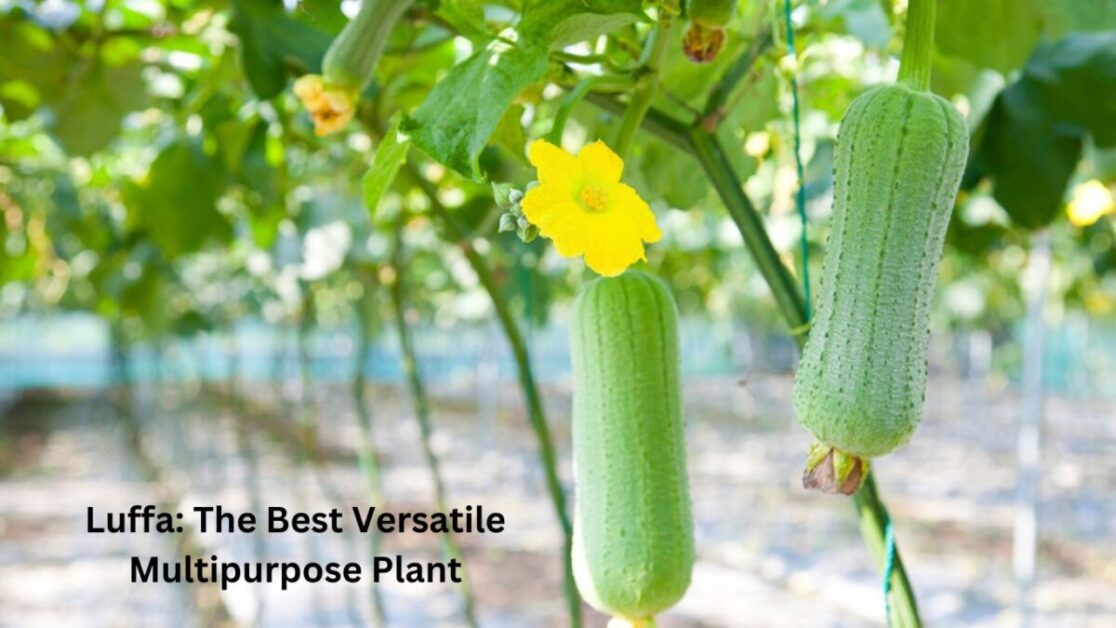
Exfoliating is an essential step in any skincare routine. It helps to remove dead skin cells, unclog pores, and reveal a smoother, more radiant complexion. While many exfoliating products on the market contain synthetic ingredients and microplastics that can harm the environment, there is a natural alternative that is both effective and eco-friendly: luffa.
Luffa, also known as sponge gourd, is a plant that belongs to the cucumber family. The fibrous structure of luffa makes it an ideal exfoliant for the skin. When used in the form of a loofah or a scrub, luffa gently buffs away dead skin cells, leaving the skin softer and smoother. Unlike synthetic exfoliants, luffa is biodegradable and does not contribute to plastic pollution. It is a sustainable option that can be safely disposed of after use. Additionally, luffa is suitable for all skin types and can be used on both the face and body. Whether you have sensitive skin or are prone to breakouts, luffa provides a gentle exfoliation that will leave your skin feeling refreshed and rejuvenated.
With its natural exfoliating properties and eco-friendly characteristics, it is a great choice for those who are looking to incorporate sustainable practices into their skincare routine. Not only does it help to improve the texture and appearance of the skin, but it also supports the health of our planet. So, why not give it a try and enjoy the benefits of a natural exfoliant while minimizing your environmental impact?
Eco-friendly Cleaning Sponge
Cleaning our homes is a routine chore that often involves the use of synthetic sponges and scrubbers. However, these products can be detrimental to our environment due to the materials used in their production and their slow biodegradation. Fortunately, there is a highly sustainable alternative – the eco-friendly cleaning sponge.
Made from natural materials such as fibers, the eco-friendly cleaning sponge offers a greener and more environmentally conscious option also known as a loofah, is a fibrous vegetable that is grown abundantly in various regions. It has a unique structure that provides excellent scrubbing power, making it ideal for cleaning surfaces in our homes. Unlike synthetic sponges, sponges are biodegradable and can be composted, reducing waste and contributing to a healthier ecosystem. By using eco-friendly cleaning sponges, we can make a small yet significant impact on minimizing plastic pollution and protecting our planet for future generations.
Biodegradable Dish Scrubber
Biodegradable dish scrubbers offer an environmentally-friendly alternative to conventional cleaning tools. Made from natural materials that decompose over time, these scrubbers help reduce the plastic waste generated by traditional sponges and brushes. The use of biodegradable dish scrubbers not only aids in reducing landfill waste, but also contributes to a healthier ecosystem.
One of the key benefits of biodegradable dish scrubbers is their ability to effectively clean dishes without causing any harm to the environment. These scrubbers are typically made from plant-based materials such as loofah or coconut fibers, which are renewable and sustainable resources. Unlike synthetic materials, which can release harmful microplastics into the environment, biodegradable scrubbers are free from toxins and chemicals, making them a safe choice for both your dishes and the planet.
Moreover, biodegradable dish scrubbers are durable and long-lasting, allowing for multiple uses before they need to be replaced. This not only saves you money in the long run but also reduces the amount of waste generated from disposable cleaning products. By choosing biodegradable dish scrubbers, you can take a small yet significant step towards a greener lifestyle, contributing to the overall sustainability of our planet.
Sustainable Bath Sponge
To achieve a sustainable bath routine, it’s essential to consider the products we use on our skin, including the bath sponge. Traditional sponges are often made from synthetic materials that are not eco-friendly and can contribute to plastic pollution. However, there is an alternative that not only offers a sustainable option but also provides numerous benefits for your skin – sponge.
It, also known as loofah or sponge gourd, is a natural and biodegradable material that comes from the fibrous interior of the plant. This plant is a member of the cucurbit family, along with cucumbers and melons. Its unique texture makes it ideal for exfoliating and cleansing the skin, effectively removing dead skin cells and leaving it smooth and rejuvenated. Unlike synthetic sponges, sponges are free from harmful chemicals, making them suitable for even the most sensitive skin types. Plus, their sustainability factor makes them an excellent choice for those looking to reduce their environmental impact without compromising on quality.
Fiber as a Natural Sponge Alternative
Fiber, derived from the plant, has gained popularity as a natural sponge alternative in recent years. With its unique texture and ability to effectively cleanse and exfoliate the skin, fiber offers a sustainable and eco-friendly option for those seeking an alternative to synthetic sponges.
One of the key advantages of fiber is its natural exfoliating properties. The rough texture of the fiber helps to remove dead skin cells, unclog pores, and promote healthy skin regeneration. Unlike synthetic sponges that may contain harsh chemicals or artificial additives, fiber provides a gentle and chemical-free exfoliation experience.
In addition to its skincare benefits, fiber is also an excellent choice for cleaning purposes. Its natural absorbency and texture make it ideal for scrubbing surfaces and removing dirt and grime. Whether it’s in the kitchen, bathroom, or any other area of the home, fiber can effectively tackle tough stains and leave surfaces sparkling clean.
Furthermore, fiber is biodegradable, making it a sustainable choice in comparison to synthetic sponges that contribute to plastic waste. When disposed of, fiber breaks down naturally without harming the environment. It is a renewable resource that can be cultivated and harvested without causing extensive damage to ecosystems.
With its versatile applications and eco-friendly nature, fiber truly stands out as a natural and sustainable alternative to traditional sponges. Whether you’re looking to enhance your skincare routine or reduce your environmental footprint, fiber is worth considering for its myriad benefits and positive impact.
for Gardening and Horticulture
Gardening and horticulture enthusiasts are always on the lookout for natural and sustainable solutions to enhance their plant growth and productivity. One such solution that has gained popularity in recent years is the use of in gardening practices. Luffa, also known as sponge gourd or loofah, is not only recognized for its exfoliating properties but also for its numerous benefits in gardening and horticulture.
One of the key advantages of incorporating luffa in gardening is its excellent water absorption and retention capabilities. The fibrous structure of luffa allows it to retain moisture, ensuring that plant roots have a steady supply of water. Additionally, luffa acts as a barrier against soil erosion, especially in sloping gardens or areas prone to heavy rain. By using luffa as a natural mulch or ground cover, gardeners can effectively conserve water and protect their soil from washing away.
Furthermore, luffa can also be utilized as a beneficial addition to compost piles. Its fibrous composition aids in creating a well-balanced compost mixture, facilitating the breakdown of organic matter and facilitating nutrient release. When integrated into the composting process, luffa helps in promoting healthy soil structure and fertility, which ultimately translates into healthier and more vibrant plants.
By exploring the potential of luffa in gardening and horticulture, enthusiasts can not only capitalize on its inherent eco-friendly properties but also contribute to sustainable practices. From water conservation to improving soil health, the integration of luffa in gardening proves to be a natural and viable option for those seeking greener solutions. So why not give luffa a try and witness its remarkable benefits in your own garden?
as a Natural Loofah for Showering
The luffa plant, also known as sponge gourd or dishcloth gourd, has been treasured for centuries as a natural loofah for showering. With its unique fibrous texture, offers a gentle yet effective exfoliation experience that leaves the skin feeling refreshed and rejuvenated. Unlike synthetic loofahs that can be harsh on the skin, it is a truly eco-friendly and sustainable option.
One of the key benefits of using luffa as a natural loofah for showering is its ability to promote healthy skin. The natural fibers gently remove dead skin cells and unclog pores, allowing for better absorption of moisturizers and other skin care products. Additionally, the exfoliation process stimulates blood circulation, promoting a radiant and glowing complexion. Its natural texture also offers a soothing massage effect, relieving stress and tension from the body.
Moreover, luffa is an ideal choice for those who are environmentally conscious. Unlike synthetic loofahs that are made from plastics and other non-biodegradable materials, it is completely biodegradable and compostable. After its useful life as a loofah, it can be composted or even used as a natural sponge alternative for cleaning and household chores.
In conclusion, it is not only a natural and sustainable option for showering but also brings a range of skin benefits. Its gentle exfoliation and massage effect contribute to healthier and more radiant skin. Additionally, its eco-friendly nature makes it an ideal choice for those who want to reduce their environmental footprint. Embracing as a natural loofah for showering not only enhances our skin care routine but also supports our commitment to sustainability.
in Traditional Medicine and Herbal Remedies
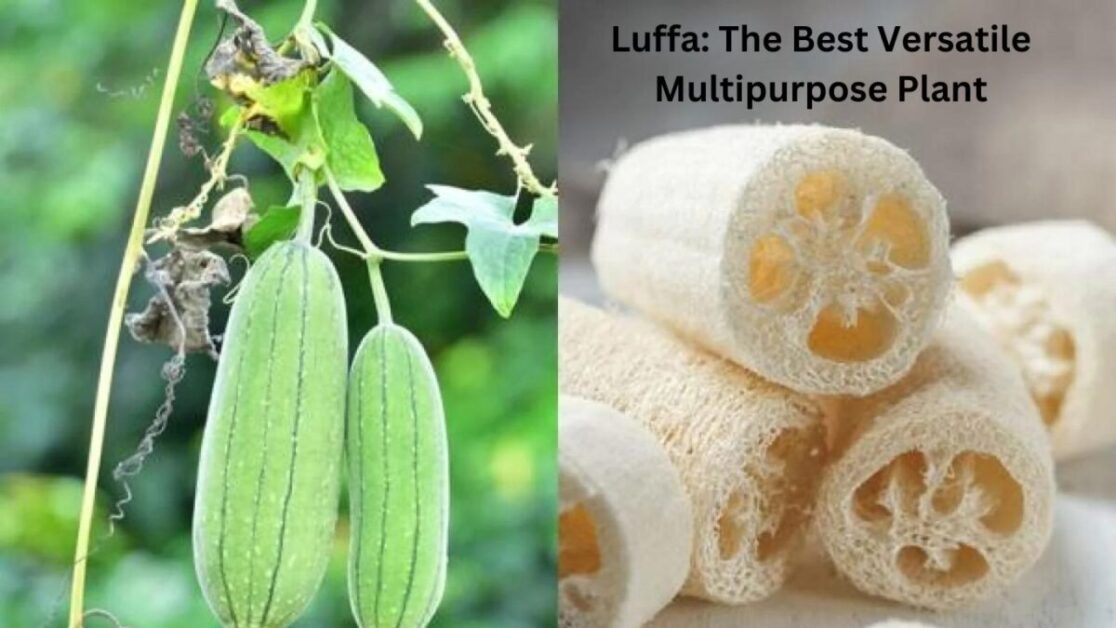
Luffa, also known as loofah, has been used in traditional medicine and herbal remedies for centuries. Its therapeutic properties have made it a popular choice for various health issues. Luffa contains active compounds such as saponins, flavonoids, phenolic acids, and polysaccharides, which contribute to its medicinal benefits.
One of the primary uses of it in traditional medicine is its ability to promote healthy digestion. The fibrous nature of acts as a natural laxative, aiding in the smooth movement of food through the digestive system. It can help alleviate constipation and improve bowel regularity. Additionally, it has been used to relieve symptoms of indigestion, bloating, and flatulence.
Furthermore, it has shown potential anti-inflammatory properties, which can be beneficial for treating skin conditions like eczema and dermatitis. Its soothing effect helps reduce redness, itching, and inflammation, providing relief to individuals suffering from these conditions. it can be used topically as a poultice or incorporated into herbal ointments and creams for skin ailments.
Incorporating into traditional medicine and herbal remedies offers a natural and sustainable approach to healthcare. However, it is essential to consult with a healthcare professional or herbalist before using for medicinal purposes, as they can provide guidance on proper dosage and usage. Always prioritize your safety and seek expert advice to ensure the best possible outcomes when using for traditional medicine purposes.
as a Natural and Sustainable Packaging Material
Luffa, a versatile plant known for its numerous applications in various industries, has now found its way into the realm of sustainable packaging. With the increasing demand for environmentally-friendly alternatives, it has emerged as a promising natural packaging material that offers a multitude of benefits.
One of the key advantages of using it as a packaging material is its biodegradability. Unlike traditional packaging materials such as plastic or Styrofoam, luffa decomposes naturally, reducing the burden on landfills and minimizing environmental pollution. This makes it an ideal choice for those seeking sustainable packaging solutions.
In addition to being biodegradable, luffa also boasts remarkable strength and durability. Its fibrous structure provides a protective layer, safeguarding the contents of the package during transportation or storage. This inherent strength, coupled with its lightweight nature, contributes to its appeal as a packaging material.
Moreover, luffa offers a unique aesthetic appeal, adding a touch of natural beauty to the packaged products. Its intricate patterns and textures create an eye-catching visual presentation, enhancing the overall image of the brand.
As the demand for sustainable packaging continues to grow, stands as a promising alternative that aligns with the principles of environmental responsibility and conservation. By harnessing the potential of this natural resource, we can pave the way for a more sustainable and eco-conscious future in the packaging industry.
for Crafts and DIY Projects
Luffa is a versatile and sustainable material that can be used in a variety of crafts and DIY projects. Whether you are looking to create unique decorations for your home or eco-friendly gifts for your loved ones, luffa can add a touch of natural beauty to your creations.
One popular use of luffa in crafting is to make natural, exfoliating bath and shower accessories. By carefully cutting and shaping the luffa, you can create your own loofahs or bath sponges that not only remove dead skin cells but also provide a spa-like experience. The natural fibers of luffa are gentle on the skin, making it an excellent choice for those with sensitive skin or allergies. Additionally, luffa is biodegradable, ensuring that your DIY bath accessories are not harming the environment.
Another creative use of luffa is in making household items like dish scrubbers and cleaning sponges. The porous nature of luffa allows it to absorb and retain water, making it an effective scrubbing material for removing dirt and grime. By incorporating luffa into your DIY cleaning tools, you can reduce your reliance on synthetic materials and contribute to a more sustainable and eco-friendly lifestyle.
as a Natural Air Purifier
The luffa plant, also known as loofah or sponge gourd, is not only a versatile ingredient in traditional cuisine and an excellent exfoliant for skin care, but it can also serve as a natural air purifier. The porous structure of luffa fibers makes it an effective tool in improving indoor air quality by reducing pollutants and allergens.
Luffa works as an air purifier by absorbing airborne particles and contaminants, such as dust, pet dander, mold spores, and even certain chemicals. The sponge-like fibers create a large surface area, allowing them to trap and retain these impurities. As a result, the air in your home becomes cleaner and healthier to breathe, particularly for individuals with allergies or respiratory sensitivities.
In addition to its air-purifying properties, also has the advantage of being a sustainable and eco-friendly option. Unlike synthetic air purifiers, which often require electricity to function, operates passively by merely being present in the environment. This plant-based solution not only reduces energy consumption and carbon emissions but also minimizes waste as luffa can be composted at the end of its useful life.
in Textile and Fiber Industry
When it comes to the textile and fiber industry, luffa has emerged as a unique and sustainable material. With its fibrous texture and versatile properties, luffa can be transformed into various textile products. Its natural fibers are known for their durability and breathability, making them suitable for creating clothing items such as hats, bags, and even footwear.
Luffa fibers have been found to possess excellent moisture-wicking capabilities, effectively absorbing and repelling moisture while keeping the skin dry. Additionally, these fibers have a unique ability to regulate body temperature, providing a comfortable and breathable wearing experience in various climates. Due to its biodegradable nature, luffa is also an environmentally friendly alternative to synthetic fibers, reducing the carbon footprint of the textile industry.
Recent innovations in the field have led to the development of luffa-based non-woven fabrics, which have proven to be highly absorbent and resistant to microbial growth. These fabrics find applications in various sectors, including medical and healthcare, as they can be used in the production of wound dressings and sanitary products. With ongoing research and advancements, luffa’s potential in the textile and fiber industry is yet to be fully explored and harnessed.
for Water Filtration and Purification
Water filtration and purification are essential processes for ensuring clean and safe drinking water. While there are various methods and technologies available for this purpose, luffa, a natural fiber obtained from the sponge gourd plant, has emerged as a promising material in recent years.
Luffa possesses unique filtration properties that make it effective in purifying water. The fibrous structure of luffa acts as a mechanical filter, trapping large particles, sediment, and impurities. Additionally, luffa contains natural substances known as saponins, which have antimicrobial properties and can help in removing harmful bacteria and microorganisms from water.
Studies have shown that luffa can effectively remove contaminants such as heavy metals, pesticides, and organic pollutants from water. Furthermore, its low cost, biodegradability, and renewability make it a sustainable alternative to conventional water filtration materials. Incorporating luffa into filtration systems can contribute to reducing the environmental impact of water treatment processes.
In conclusion, luffa has emerged as a promising natural material for water filtration and purification. Its unique properties, including its fibrous structure and antimicrobial compounds, make it effective in removing impurities from water. By harnessing the potential of luffa, we can develop sustainable and eco-friendly solutions for ensuring access to clean and safe drinking water.
as a Natural Bathmat
Luffa, also known as sponge gourd or loofah, is not only a popular kitchen ingredient and shower accessory, but it can also be a fantastic natural material to use as a bathmat. Its unique fibrous texture and absorbent properties make it an excellent choice for those seeking an eco-friendly and sustainable alternative for their bathroom.
When used as a bathmat, luffa provides a cushioned and comfortable feel under your feet while effectively absorbing moisture. Its natural fibers allow for optimal water drainage, preventing the formation of mold or mildew, which is a common issue with traditional synthetic bathmats. Furthermore, luffa is biodegradable, making it a great choice for those looking to reduce their environmental impact. By opting for a luffa bathmat, you not only enhance your shower experience but also contribute to a greener planet.
for Natural Pest Control
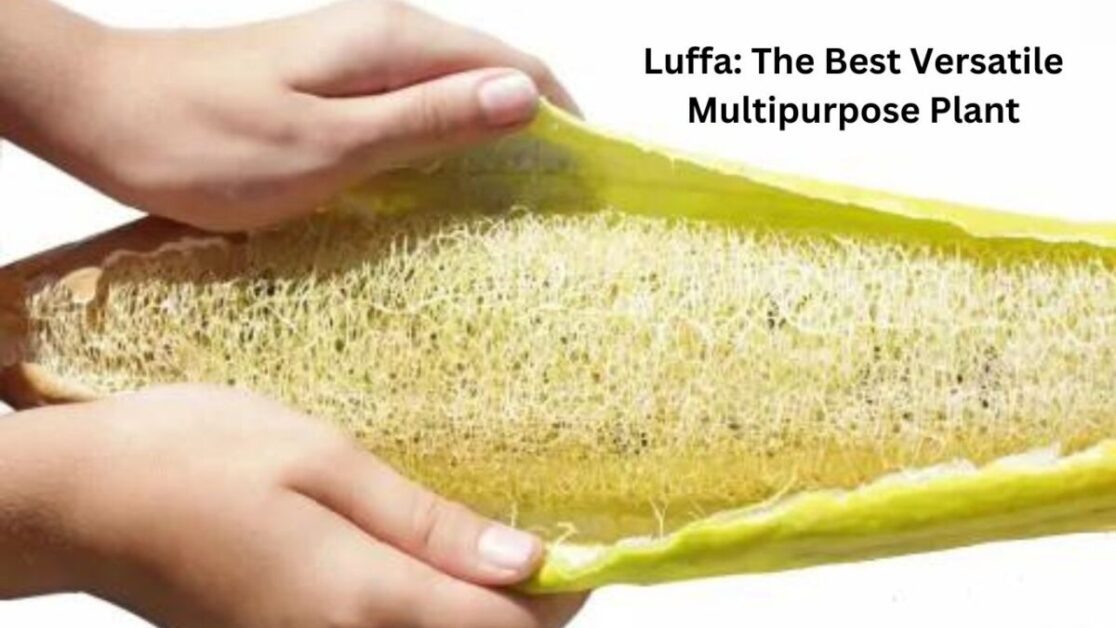
Luffa, also known as sponge gourd or loofah, is not only a versatile plant but also an effective natural pest control solution for your garden. Luffa possesses natural properties that make it an excellent choice for combating various garden pests without the need for harmful chemicals or pesticides.
One of the primary pests that luffa can help control is aphids. These small, sap-sucking insects can wreak havoc on your plants, causing stunted growth and deformation. Luckily, luffa contains compounds that act as a natural repellent to aphids. By strategically placing luffa plants throughout your garden, you can help deter these pests and protect your precious crops.
In addition to aphids, luffa can also help manage other common garden pests, including spider mites, cucumber beetles, and squash bugs. These pests can cause extensive damage to your plants, leading to reduced yields and overall garden health. Combatting them with natural pest control methods like luffa not only protects your plants but also ensures that you are cultivating a garden that is free from harmful chemicals.
Here’s a table highlighting various aspects of it, the versatile multipurpose plant:
| Aspect | Description |
|---|---|
| Botanical Name | Luffa acutangula (Angled Luffa), Luffa aegyptiaca (Smooth Luffa), Luffa cylindrica (Sponge Gourd) |
| Common Names | Angled Luffa, Smooth Luffa, Sponge Gourd, Loofah, Dishcloth Gourd, Vegetable Sponge |
| Plant Type | Vine |
| Climate | Warm, tropical, and subtropical climates |
| Soil | Well-drained, fertile soil |
| Watering | Regular watering, avoid waterlogging |
| Sunlight | Full sun |
| Growth Habit | Fast-growing vine |
| Propagation | Seeds (direct sow or start indoors) |
| Harvesting Time | 50-80 days after sowing |
| Edible Parts | Young fruits (edible when immature), flowers, and leaves |
| Nutritional Value | High in vitamins and minerals, low in calories |
| Culinary Uses | Used in stir-fries, soups, curries, pickles, and salads |
| Fiber and Sponge | Mature fruits are used as natural sponges for bathing and cleaning |
| Crafts and Art | Dried luffa fibers can be used in various crafts like weaving and basket making |
| Medicinal Uses | Traditional medicine for skin conditions, arthritis, and jaundice |
| Environmental Uses | Biodegradable alternative to synthetic sponges and scrubbers |
| Gardening Benefits | Attracts pollinators, adds visual interest to gardens, and provides shade in hot climates |
| Challenges | Requires a long growing season in temperate climates, susceptible to pests and diseases |
| Cultural Significance | Commonly cultivated in Asia, Africa, and parts of the Americas for centuries |
It is indeed a remarkable plant with a wide range of practical uses, making it a valuable addition to gardens and households worldwide.
in Traditional Cuisine and Culinary Uses
Luffa, also known as sponge gourd or loofah, is a versatile vegetable that has been used in traditional cuisine and culinary practices for centuries. With its fibrous texture and mild flavor, adds a unique element to various dishes around the world.
In Asian cuisine, is often incorporated into stir-fries, soups, and curries. Its tender flesh and sponge-like texture allow it to absorb the flavors of the dish, creating a delightful contrast of tastes and textures. it can be sliced, diced, or julienned to add a crunchy element to stir-fried vegetables or a satisfying chewiness to hot pots.
One popular dish in Chinese cuisine is the stir-fried luffa with garlic, where the luffa is lightly cooked to retain its crunchiness and sweetness. In Indian cuisine, luffa is commonly used in traditional curries, such as the delicious snake gourd curry. Additionally, luffa can be pickled, fermented, or even stuffed with ground meat or vegetables for a more elaborate preparation.
Not only does luffa offer a unique culinary experience, but it also provides several health benefits. Luffa is low in calories and high in dietary fiber, making it an excellent addition to a balanced diet. It is also rich in vitamins A, C, and E, as well as minerals like calcium, potassium, and magnesium. These nutrients contribute to healthy skin, improved digestion, and a strengthened immune system.
As you explore traditional cuisine and culinary uses of luffa, you’ll discover a world of possibilities for incorporating this versatile vegetable into your own cooking repertoire. From simple stir-fry dishes to complex curries, luffa brings a delightful flavor and texture that will surely elevate your culinary creations. Explore and experiment with luffa, and let its unique qualities surprise and delight your taste buds.
What are some traditional cuisines that use It?
Luffa is commonly used in various traditional cuisines, such as Chinese, Thai, Vietnamese, and Indian cuisine.
How is It prepared for cooking?
Luffa is typically peeled, and the inner flesh is sliced or chopped before being used in cooking.
What dishes can be made using It?
Luffa can be used in a variety of dishes, such as stir-fries, soups, curries, and stews.
What are the nutritional benefits of consuming it?
Luffa is a good source of dietary fiber, vitamin C, potassium, and calcium.
Does it have any specific health benefits?
Luffa is believed to have various health benefits, including aiding digestion, reducing inflammation, and promoting healthy skin.
Can It be eaten raw?
While it is possible to eat luffa raw, it is more commonly cooked to enhance its flavor and texture.
How does It taste?
Luffa has a mild and slightly sweet taste, similar to zucchini or cucumber.
Can It be used in vegetarian or vegan recipes?
Yes, luffa is a versatile ingredient that can be incorporated into both vegetarian and vegan recipes.
Where can I buy it for cooking?
Luffa can often be found in Asian grocery stores, specialty markets, or online food retailers.
Are there any specific cooking techniques to keep in mind when using It?
Luffa cooks relatively quickly, so it is best to add it towards the end of the cooking process to prevent it from becoming mushy.
Can It be frozen for later use?
Yes, luffa can be frozen for later use, but it may alter the texture slightly.
Are there any precautions to consider when consuming It?
Some individuals may be allergic to luffa, so it is advisable to test for any allergic reactions before consuming it in large quantities.



